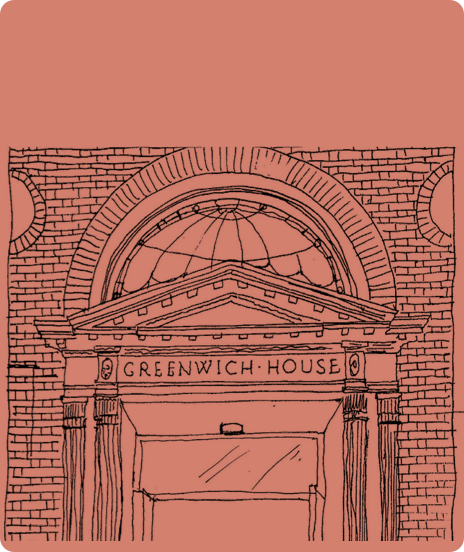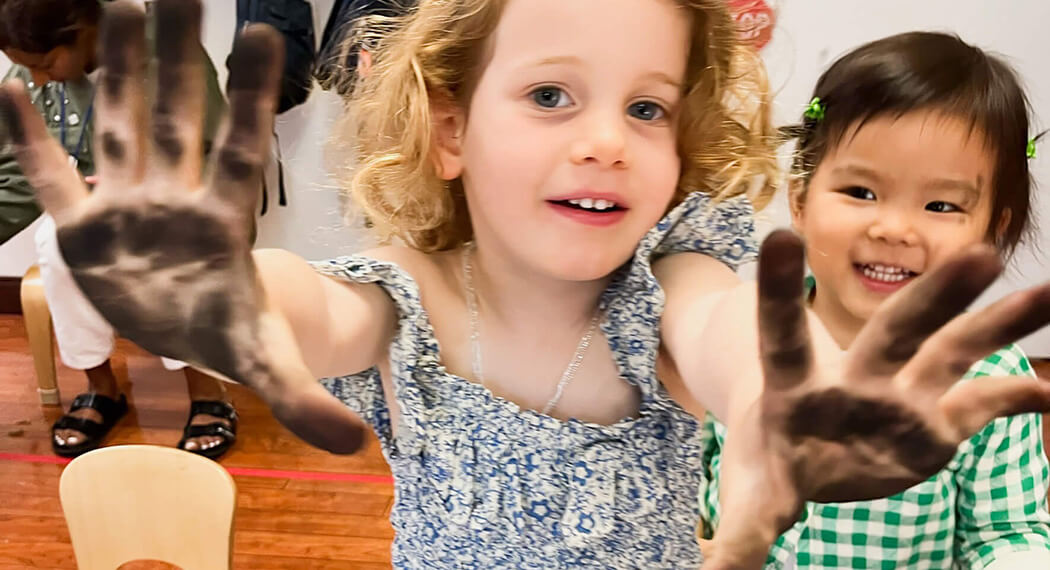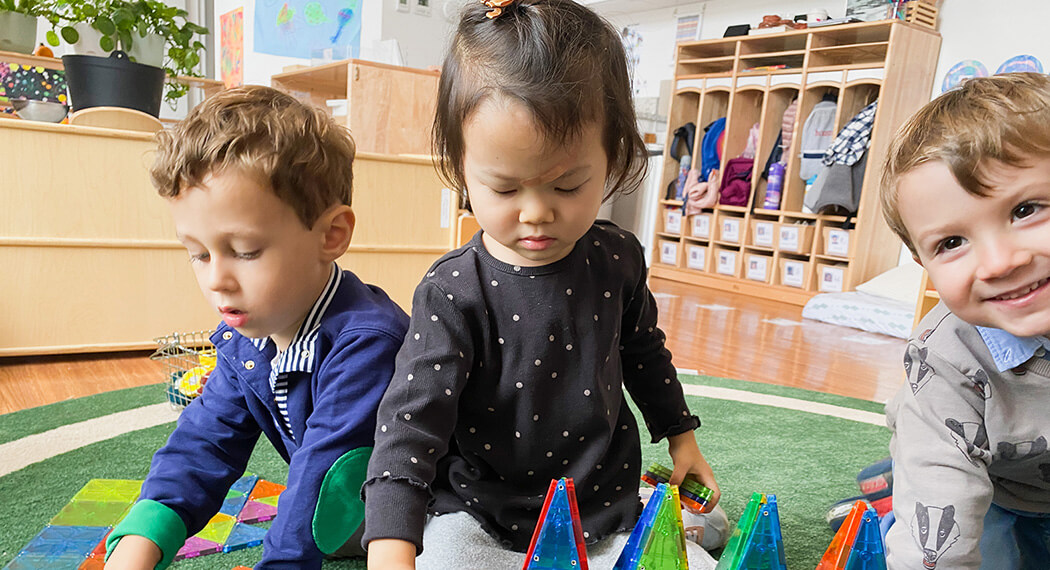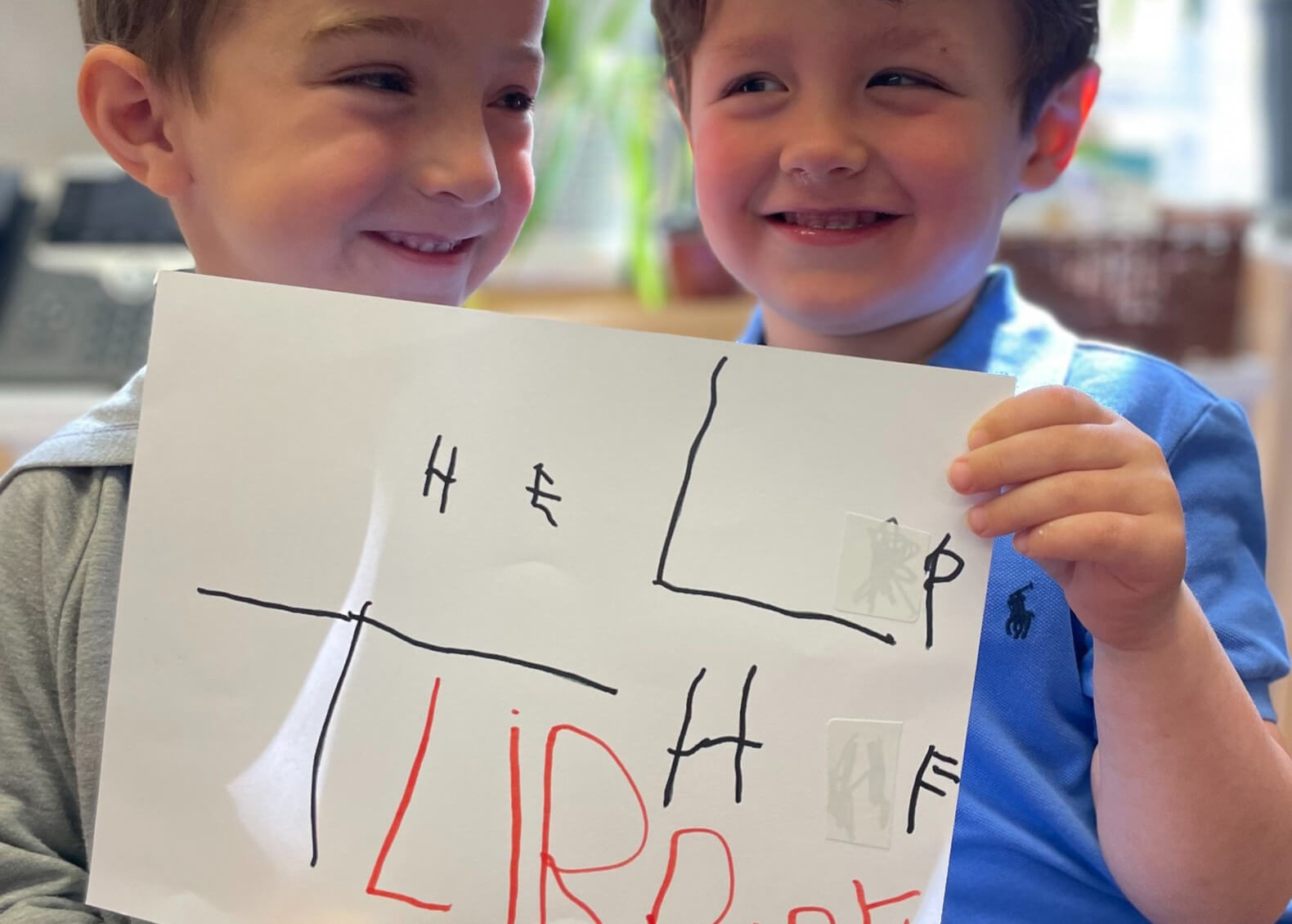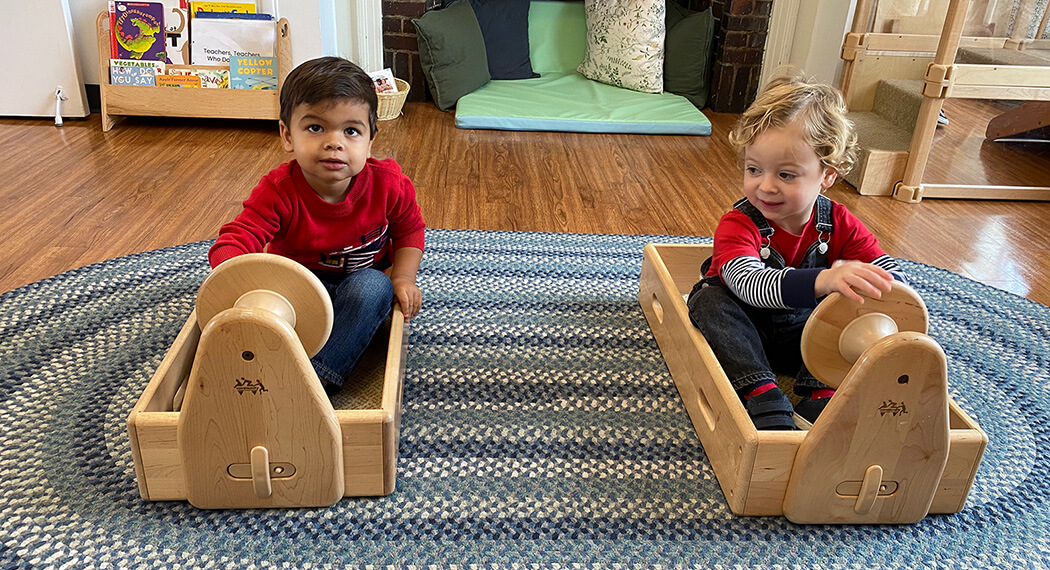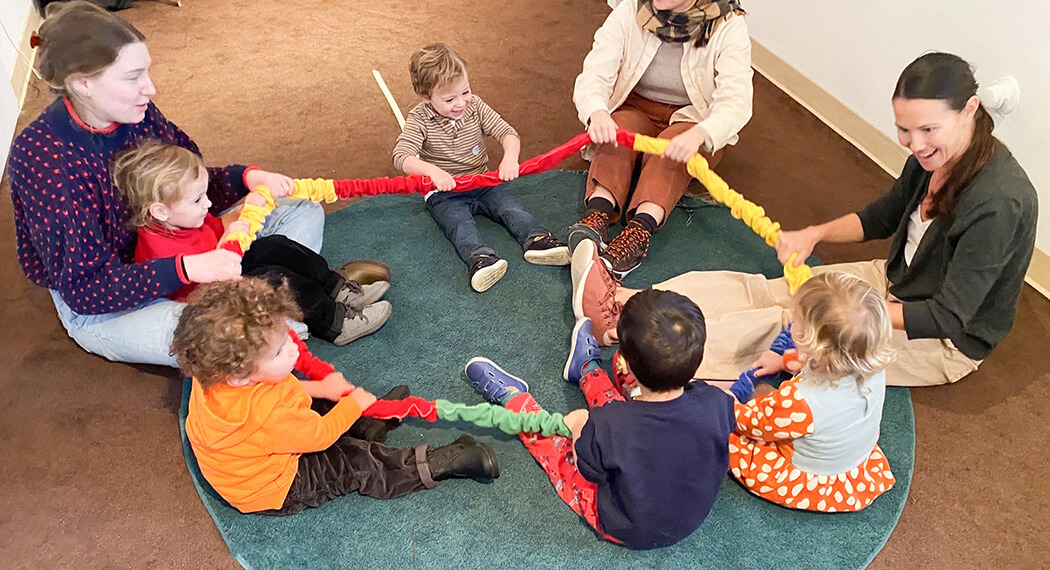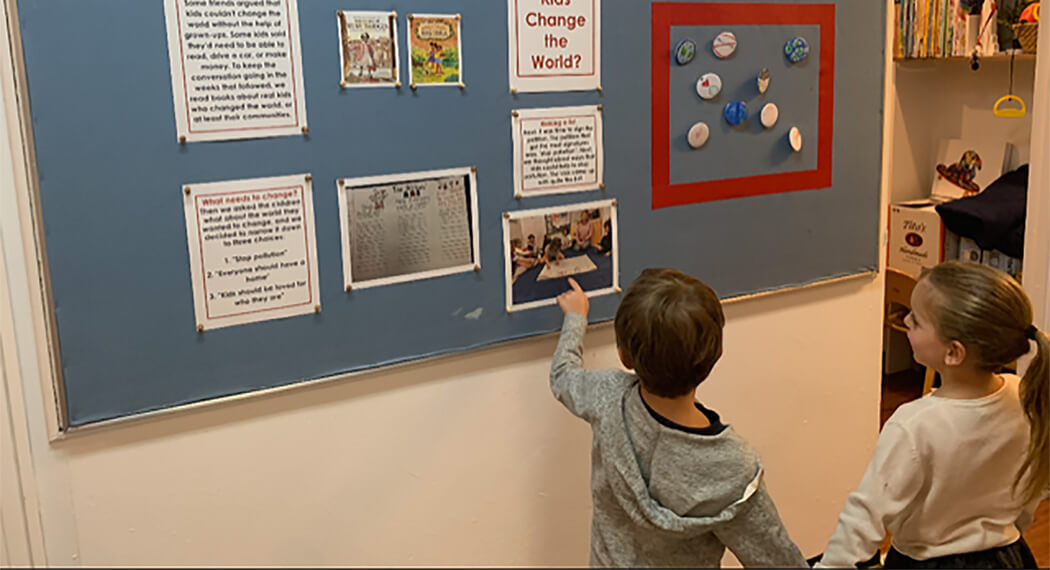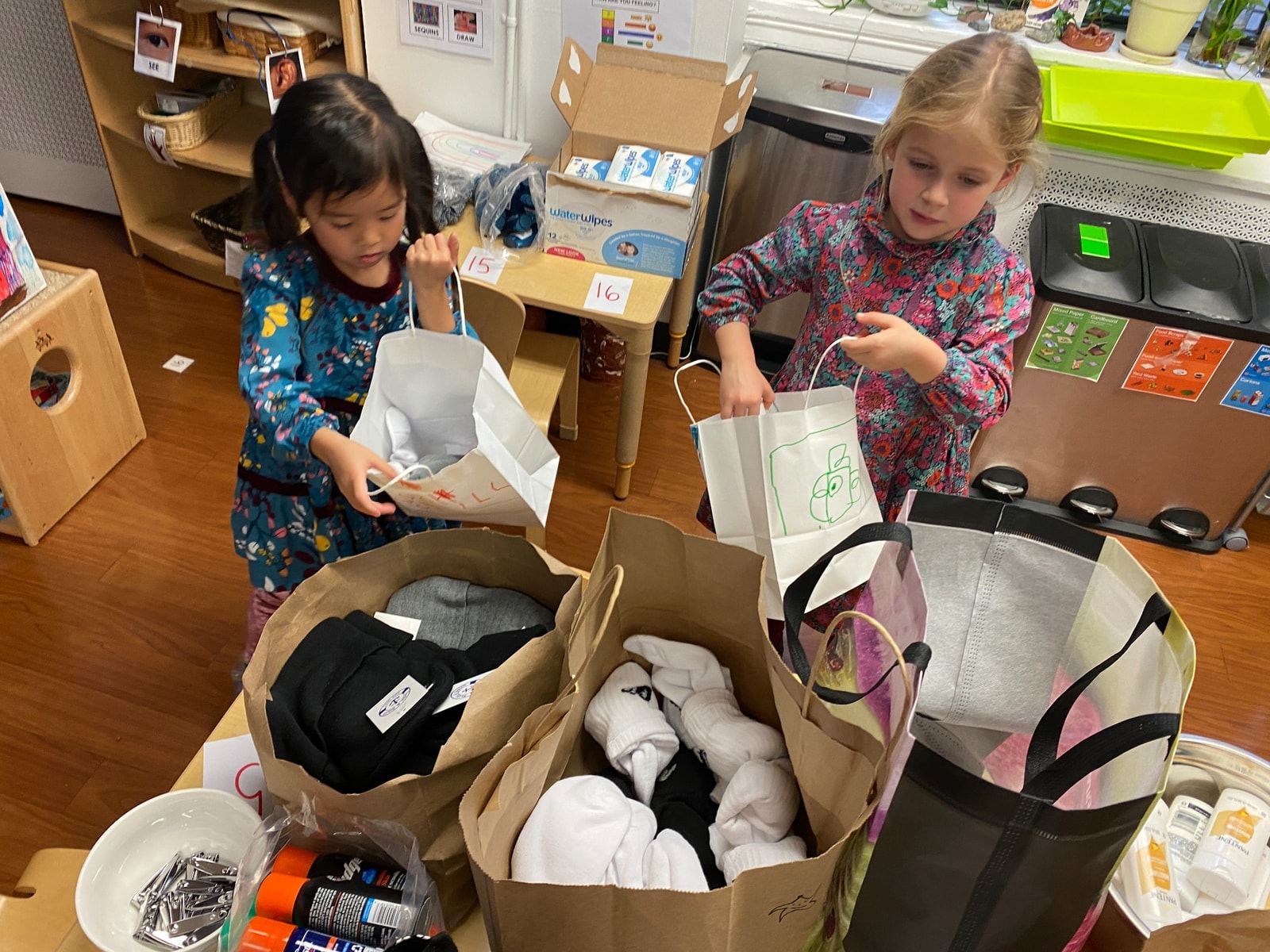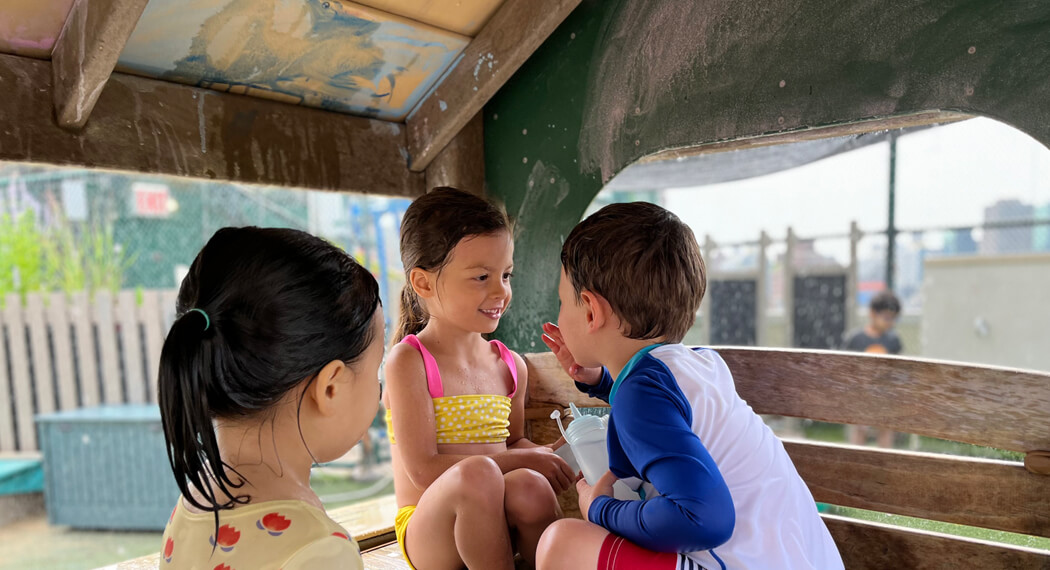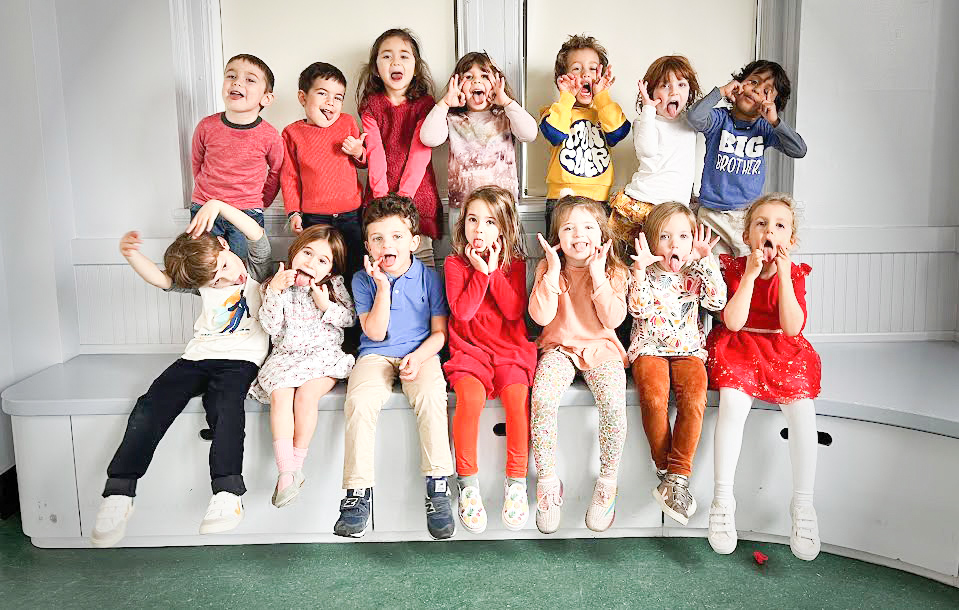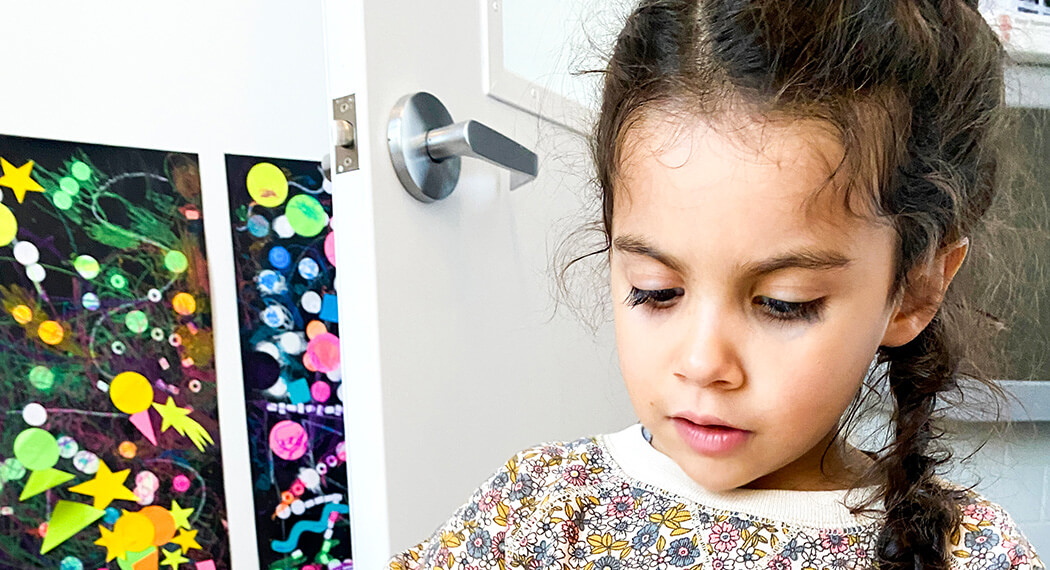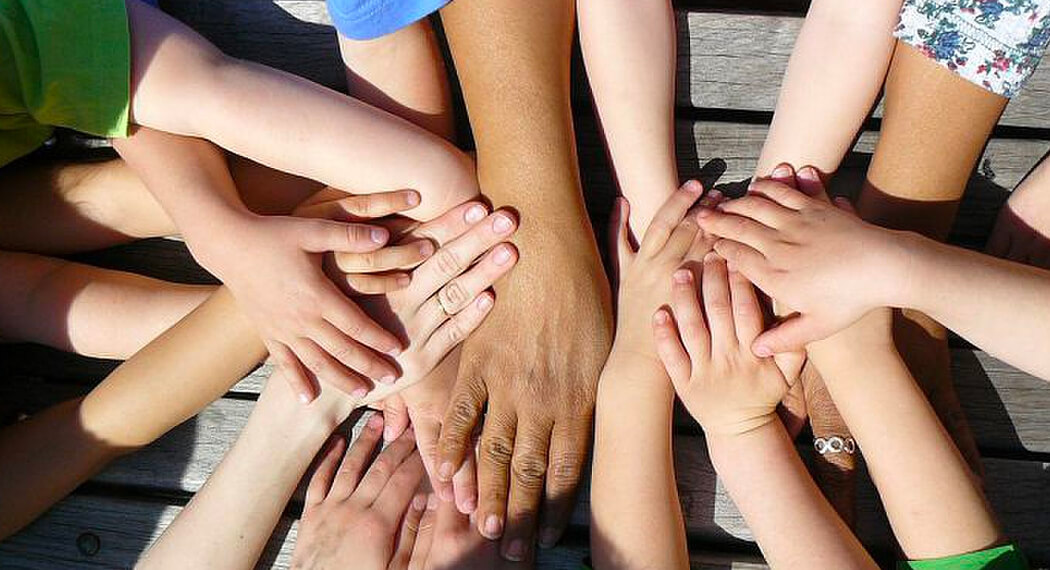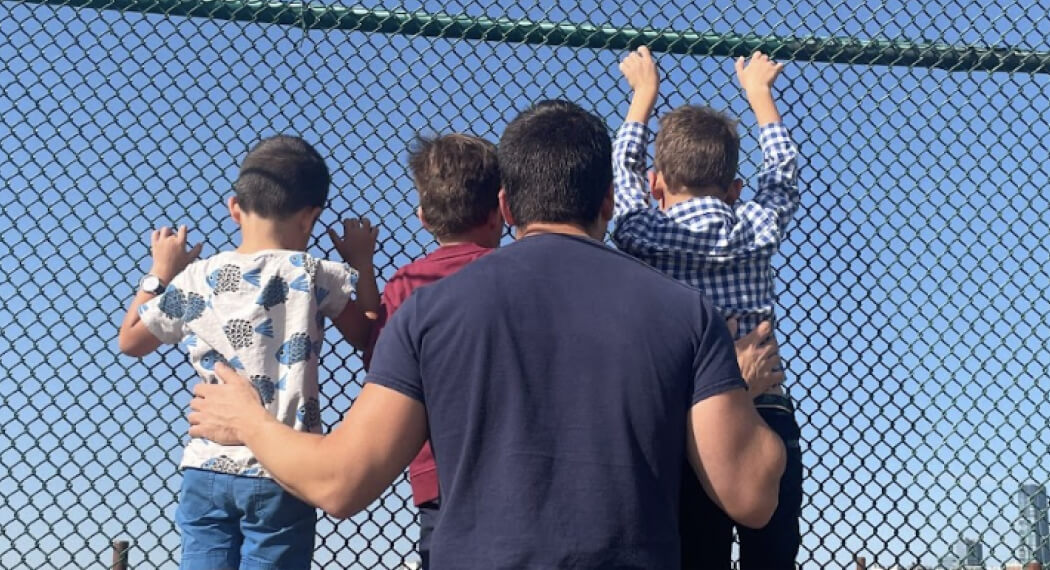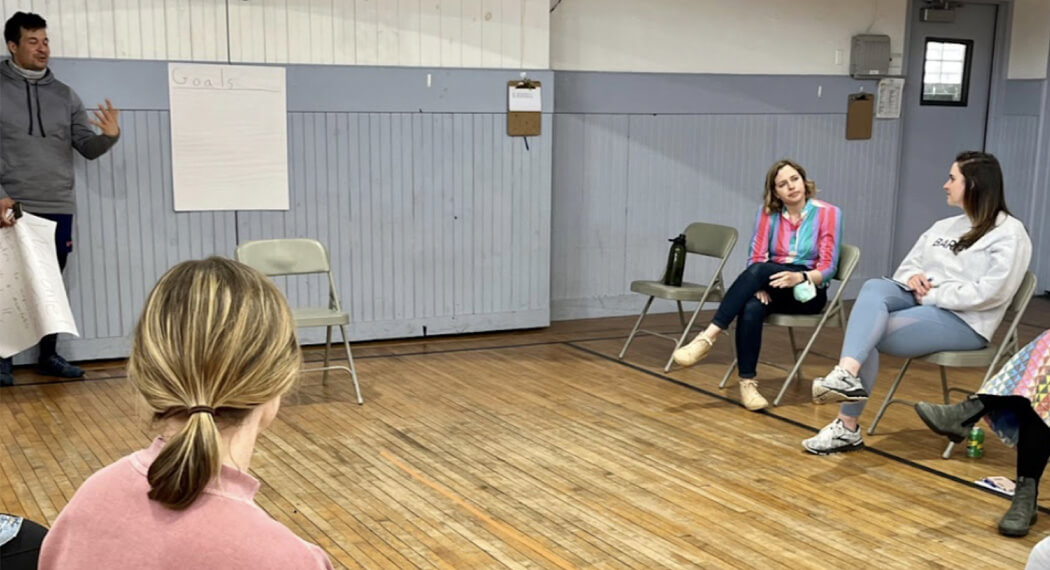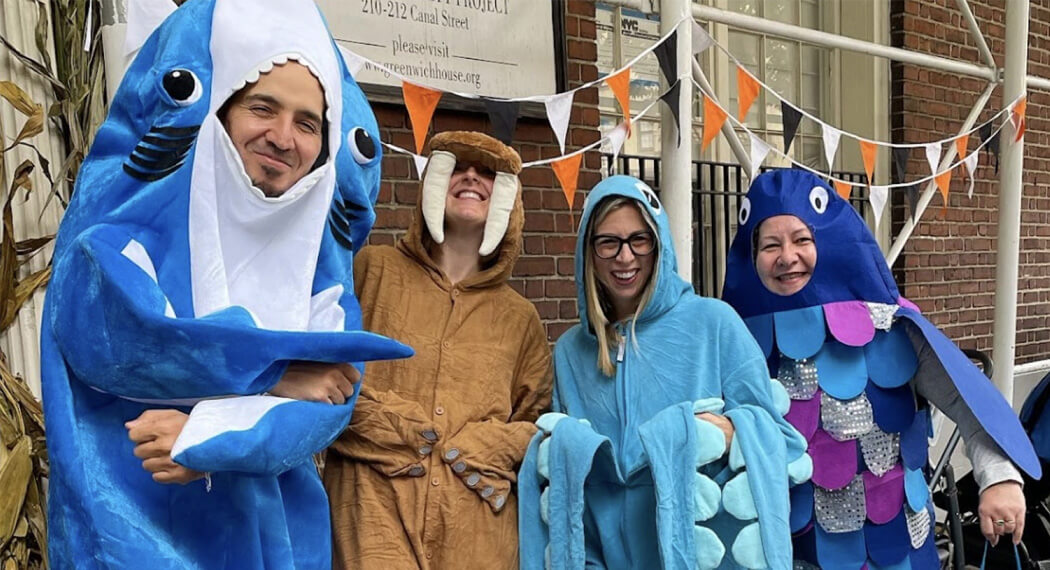Could simple story-telling boost all sorts of academic and social development in young children?
During this process, each child had to wait their turn to relate their idea for “what’s next?” in the story. Brenna was wise to keep each entry succinct, so the participants only had a short wait. Brenna showed respect for each child as they spoke. She did this by noting each word, each idea down on paper and protecting their turn from any friendly interruptions.
As the kids listened to their friends, they were introduced to new vocabulary, and symbols like a wavy line to represent water, or a frown to represent sadness. Each child could pull in a character of their choice: puppies, a dinosaur, “Paw Patrol” or even a pig!
Brenna broke down the writing at times into fully spelled words, at other times into diagrams and symbols. For instance, the word PAW was also visible by a little paw icon. A cat icon guarantees instant symbol recognition. The children saw that symbols and words hold specific meanings, sentence after sentence. They witnessed the act of speaking, translated into the act of writing and then translated into the act of reading.

